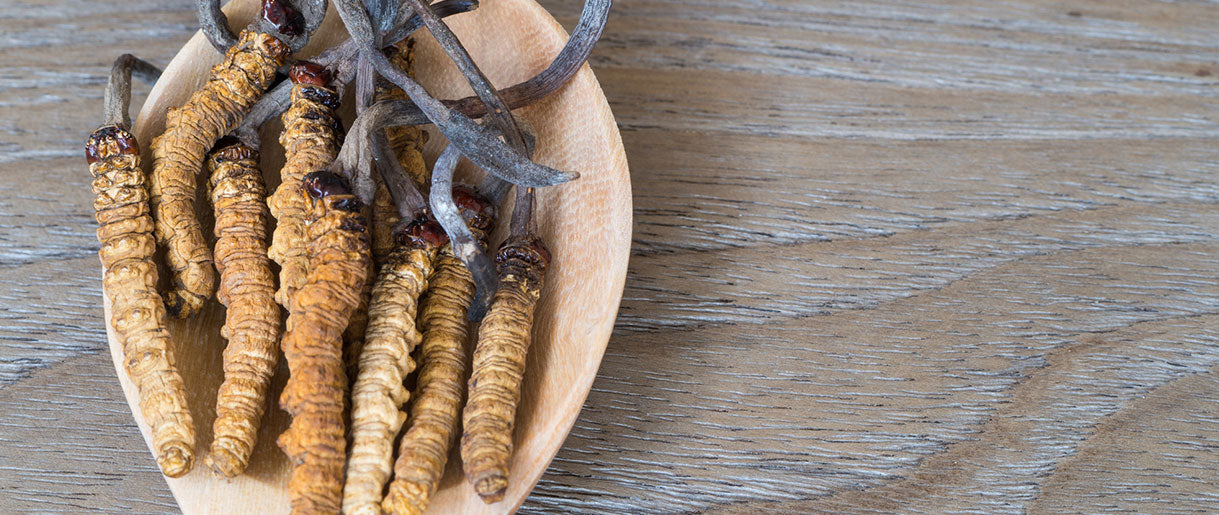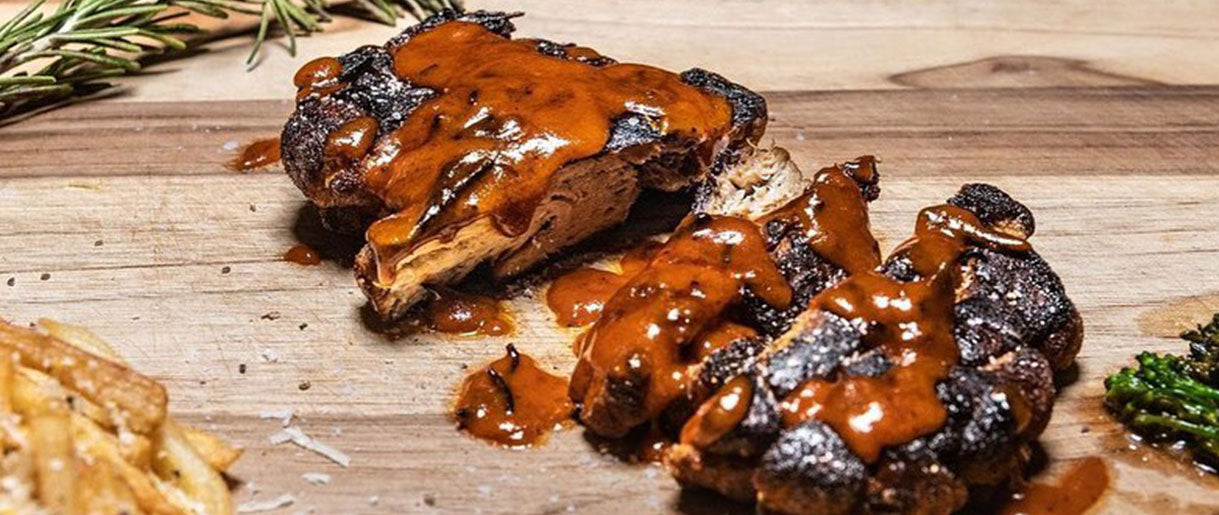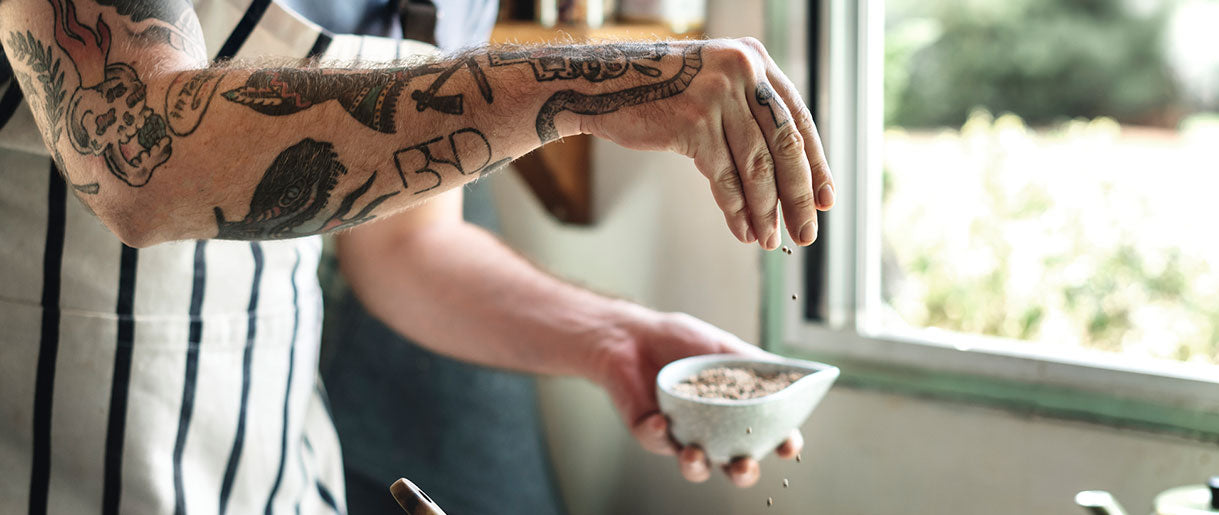Mushrooms have a unique flavor often described as earthy, nutty, and slightly meaty, with a flavor profile commonly associated with 'umami,' the fifth basic taste after sweet, sour, bitter, and salty. This umami quality gives mushrooms a savory, rich depth of flavor.
The specific taste of a mushroom can vary based on its variety and how it's prepared. For instance, button mushrooms have a mild, subtle taste, while shiitake mushrooms are more robust and earthy. Portobellos are rich and meaty, making them popular in vegetarian cuisine, while truffles have an intense, savory taste and flavor highly prized in gourmet cooking. The preparation method, such as sautéing, roasting, or grilling, can also bring out different flavor nuances in mushrooms.
From the delicate oyster mushrooms, the crunchy button mushrooms, and the hearty portobello mushrooms to the medicinal Lion's mane and shiitake mushrooms, there is a variety to suit any palate. So, if you haven't already, why not add some mushrooms to your next meal and discover the wonderful world of mushroom cuisine?
Before you do, let's discuss what different mushroom species taste like and give you reasons to use these fungi as a meat substitute in your creamy, spicy, and smooth meals.
From Ancient Times to Today: The Cultural Significance of Mushrooms

The use of mushrooms, including oyster mushrooms, dates back to ancient times—they were not just a part of the diet but held high cultural and spiritual significance in many societies. For instance, in Ancient Egypt, mushrooms were considered a delicacy and reserved for the Pharaohs due to their unique flavor.
On the other hand, in many Asian cultures, particularly in China and Japan, mushrooms like the shiitake mushroom have long been recognized for their medicinal properties and umami taste, often incorporated into traditional medicinal soups and dishes.
The Diverse Spectrum of Mushroom Species

The world of mushrooms is incredibly diverse. This diversity can be seen in myriad flavors, from the subtle and tender oyster mushrooms to the rich, meaty portobello mushrooms. In addition, the slight nuttiness of cremini mushrooms contributes to their popularity in many recipes.
Meanwhile, with its unique honeycombed cap, the morel mushroom presents a different flavor profile—earthy, smoky, and highly prized among culinary enthusiasts. These are just a few examples, but the variety extends far beyond the usual mushrooms we commonly see in grocery stores.
The Ubiquitous Umami: Unraveling Mushroom Tastes

Despite their diversity, edible mushrooms' distinctive umami taste is a unifying trait. This flavor, which can be described as a savory, broth-like taste, is a characteristic feature of many mushroom species, adding to the depth and intensity of their unique flavors.
Whether it's the hearty portobello mushrooms, the delicate oyster mushrooms, the versatile cremini mushrooms, or the prized shiitake mushrooms, each brings its unique spin to the mushroom tastes we've come to love. These intense flavors make mushrooms a staple ingredient in kitchens around the world.
Understanding the Flavor Profile of Mushrooms
When someone asks, "What do mushrooms taste like?" the answer isn't as simple as it may seem. Mushrooms, particularly edible mushrooms, have a unique and complex flavor that can be delightful to the palate. The taste of mushrooms tends to be earthy, slightly nutty, and has a unique quality that can only be described as 'umami.'
The Unmistakable Umami Flavor
'Umami' originated in Japan, meaning 'pleasant savory taste.' It's often described as the fifth taste, joining the ranks of sweet, salty, bitter, and sour. The umami flavor is prominent in various foods but particularly strong in edible mushrooms. This delicious, savory characteristic of the mushroom taste sets it apart in the culinary world, adding depth to any dish they grace.
A Symphony of Textures: The Feel of Mushrooms
While the flavor is integral, the texture of mushrooms also plays a massive role in their appeal. Mushrooms' tastes are amplified by their unique texture—slightly spongy, yet tender, with a satisfying chewiness that's distinctively mushroom.
The Impact of Cooking Methods on Mushroom Taste
Cooking methods can significantly alter and enhance the mushroom taste. For example,sautéing oyster mushrooms in butter or olive oil can help bring out their sweetness, making them even more delicious. Grilling or roasting Portobello mushrooms, on the other hand, intensifies their meatiness, further enhancing the traditional mushroom flavor.
The Taste Of 16 Top-Rated Edible Mushrooms
1. What Do Lion's Mane Mushrooms Taste Like?

Lion's mane taste is very similar to seafood. Many people frequently compare the taste of this mushroom to that of lobster or crab meat but with earthier undertones.Their creamy seafood-like taste makes these cooked mushrooms ideal for adding a meaty taste to vegan dishes.
Raw Lion's mane is exceptionally spongy and chewy. But you can eat it raw if you can get past these drawbacks. Vegetarians who prefer eating these mushrooms raw can include them in salads, adding a variety of vitamins and minerals, including iron, calcium, magnesium, copper, and zinc, to their side dish.
However, it's best to prepare them to fully appreciate their distinctive flavor because, like other mushrooms, they will absorb the flavor of any sauces and spices used when preparing them. Lion's mane is juicy and tender when cooked, and in vegan recipes, it frequently takes the place of seafood.
Lion's mane mushrooms are ideal for roasting, sautéing, deep frying, or adding to sauces and stews because they have a thick stringy texture and are meatier than most mushrooms. If you are new to using mushroom varieties in your cooking, you can start with Lion's mane mushroom recipes that offer you maximum versatility.
2. Maitake Flavor

The aroma and flavor of maitake mushrooms are distinctive, rich, and woody. Even those who dislike mushrooms enjoy their delicate, feathery texture. Maitake offers the careful taster even more subtleties. To begin with, it has a stronger savory side than a porcini and is more delicate than shiitakes. Maitake has a slight hint of spice, but it's not hot.
The highly nutritional Maitake mushrooms can be cooked whole or cut into smaller pieces to suit any recipe. It's an excellent option for both side dishes and soups in addition to main dishes, quickly replacing vegetables and other products in your light or heavy meals.
Like most mushrooms, Maitake will absorb many flavors; for example, frying it with soy sauce and garlic will give it those flavors. Moreover, you can use the maitake mushrooms in your sandwiches and pizza toppings for more than just its umami flavors—Maitake has numerous health benefits. It carries numerous nutrients, including vitamin D and others.
3. Reishi Mushroom Taste

Reishi mushroom's taste is unique, boasting an earthy bitterness that may not be palatable to most. For some, this flavor can be similar to rich dark chocolate (this one's for you, chocolate lovers!). However, the texture of fresh mushrooms is firm and tough.
Ganoderma mushrooms don't typically make the cut as a culinary staple in the mushroom world because their flavor is less alluring than that of other mushrooms. But, as the bitter flavor of a Reishi comes from the inner yellow parts, removing it leaves the white portion, which tastes like meat.
Reishi mushrooms do have culinary advantages, but not everyone will agree. These mushrooms are typically quite chewy, but Eastern cuisines have discovered a way to make them tender—almost like tofu—in their recipes. With time and patience, you can make your Reishi mushrooms taste as delicate and flavorful as beef. However, it depends on your cooking technique and chosen seasonings and ingredients.
The mushroom is best enjoyed with other drinks and food or as health supplements. However, while its flavor profile may not be too impressive, you will enjoy the health benefits of Reishi and the fact that the fungus supplies nutrients like selenium, protein, and potassium without increasing the calories you consume.
4. Chaga Mushroom Flavors

The Chaga mushroom flavor resonates if you've ever had twig tea or kukicha. It has a tinge of sweetness and mild, soothing bitterness. It has an earthy flavor, possibly the closest taste to a mushroom. In addition, some say Chaga has a coffee-like flavor. This is one of the reasons Chaga tea taste is quite popular among individuals looking for creative ways to add beneficial bioactive ingredients to their diet.
Chaga that tastes incredibly bitter or repulsive should make you wonder what kind of tree it came from. Was the tree still alive, and was the Chaga dried and prepared safely and correctly?
Usually, the flavor of Chaga is a reliable indicator of its origin and quality. So, when getting your Chaga from the grocery stores, check for quality information to ensure a pleasant experience when taking a bite of the mushroom after preparing it with your favorite seasoning.
5. Cordyceps Taste

Cordyceps mushrooms have a mild taste with a sweet, fruity aftertaste. However, it's not the sweet taste that makes you want to include them in desserts; it tastes more like the savory sweetness that a nice ripe tomato or cooked-down onions can have.Honey mushrooms and club mushrooms have a similar sweetness.
A fake Cordyceps mushroom is bitter. This is how you can distinguish it from an authentic one. To enjoy the health benefits of cordyceps mushrooms, ensure you use genuine ones.
6. Turkey Tail Mushroom Flavor

Turkey tail mushrooms don't taste as bitter as some other medicinal mushrooms, like Reishi. However, they don't taste all that great, either. Some have characterized the taste of turkey tail mushrooms as "slightly bitter, but not particularly mushroomy," "rather mild and unimpressive," and "somewhat earthy."
Turkey tail has a more robust flavor and a texture that requires blending than some other valuable mushrooms. But people consume Turkey tail mushrooms for their medicinal benefit, not their taste.
7. Button Mushroom Taste

Button mushrooms have a mild, slightly sweet, and nutty flavor. When cooked, the texture of button mushrooms can range from tender to somewhat chewy, depending on the cooking method.
Button mushrooms are often used as a base ingredient in many dishes, as they can easily absorb the flavors of other ingredients. They can be eaten raw, sautéed, grilled, or roasted and are commonly used in soups, stews, stir-fries, pasta dishes, and as a pizza topping.
8. What Do Shiitake Mushrooms Taste Like?

Shiitake mushrooms have a savory and smoky flavor with a slightly meaty and earthy taste. These mushrooms are commonly used in Asian cuisine and are prized for their rich and robust flavor. In addition, Shiitake mushrooms have a firm and meaty texture, making them a popular substitute for meat in vegetarian and vegan dishes.
When cooked, shiitake mushroom taste and flavor become more pronounced, and their texture becomes slightly chewy. Shiitake mushrooms are perfect for stir-fries, soups, stews, and noodle dishes, and they can also be sautéed or roasted as a flavorful side dish or added to a salad.
9. White Button Mushrooms Taste

White button mushrooms have a mild, sweet, nutty flavor and a delicate, brittle texture. When cooked, white button mushrooms have a tender texture and absorb other ingredients' flavors.
They can be eaten raw or cooked and are ideal in soups, stews, stir-fries, pasta dishes, and as a pizza topping. White button mushrooms are also commonly stuffed with various fillings, such as cheese, herbs, and breadcrumbs, and baked for a delicious appetizer.
10. What Do Portobello Mushrooms Taste Like?

The portobello mushroom has a meaty, earthy flavor with a dense and hearty texture. These mushrooms are the mature version of the white button mushroom and are known for their robust flavor and versatility in cooking. Portobello mushroom caps have a firm and chewy texture when cooked.
They are often grilled or roasted, which brings out their rich and savory flavor. Portobello mushrooms can be used in various dishes, including sandwiches, burgers, enchiladas, pasta, and pizzas. For a delicious and satisfying appetizer, they can also be marinated or stuffed with various fillings, such as cheese, herbs, and vegetables.
11. What Do Morel Mushrooms Taste Like?

Morel mushrooms have a unique, earthy, nutty, and slightly sweet flavor with a delicate and sponge-like texture. Morels have a distinctive honeycomb-like appearance, and their flavor and aroma are often complex and intense. Morel mushrooms have a slightly chewy texture and a nutty, woodsy taste when cooked.
They are often used in sauces, soups, stews, and risotto and can also be sautéed with butter and herbs as a simple and delicious side dish. Morel mushrooms are usually found in the wild and are often expensive due to their limited availability. However, their unique and rich flavor makes them a popular and sought-after ingredient for adventurous foodies and gourmet chefs.
12. What Do Oyster Mushrooms Taste Like?

Oyster mushrooms have a delicate, mild, and slightly sweet flavor with a subtle nutty aroma. They are a popular mushroom variety known for their soft and velvety texture and ability to absorb flavors from other ingredients in a dish. Oysters have a soft and tender texture when cooked, and they can be used in various dishes, including soups, stews, stir-fries, pasta dishes, and salads.
They are often sautéed with butter and herbs or roasted with olive oil to enhance their flavor and texture. The king oyster mushroom is also commonly used as a meat substitute in vegetarian and vegan dishes, thanks to its soft and meaty texture.
13. What Do Enoki Mushrooms Taste Like?

Enoki mushrooms have a mild and delicate flavor with a slightly crunchy texture. They are a popular mushroom variety in Asian cuisine and are commonly used in soups, stews, salads, and stir-fries. When cooked, enoki mushrooms have a slightly crunchy texture, and their mild flavor pairs well with other ingredients in a dish.
They are often used as a garnish or added to a dish just before serving, as they can quickly become soft and lose their crunchy texture when overcooked. Enokis are also a good source of nutrients, including fiber, protein, and vitamins B and D.
14. What Do Cremini Mushrooms Taste Like?

Creminis, also known as baby portobellos, have a mild and earthy flavor with a slightly meaty and nutty taste. Cremini mushrooms have a firm and dense texture, making them hearty ingredients in soups, stews, sauces, and sautés.
When cooked, cremini mushrooms have a tender and meaty texture and can be easily seasoned with herbs and spices to enhance their flavor. The cremini mushroom taste makes them a popular addition to pizzas, pasta dishes, and risotto. They are also an ingredient in vegetarian and vegan recipes as a meat substitute.
15. What Do Porcini Mushrooms Taste Like?

Porcini mushrooms, also known as king bolete, have a rich and robust flavor with a slightly nutty and earthy taste. In addition, Porcinis have a meaty and dense texture, making them popular in hearty dishes such as soups, stews, risottos, and pasta sauces. When cooked, porcini mushrooms release a rich and savory flavor that pairs well with herbs, garlic, and butter.
They are also commonly used in meat dishes, such as beef or venison, as the intense flavor of the mushrooms can enhance the taste of the meat. Unfortunately, Porcini mushrooms can be difficult to find and are often expensive due to their limited availability.
16. What Do Chanterelle Mushrooms Taste Like?

Chanterelle mushrooms have a delicate, fruity flavor and a subtly peppery and earthy taste. In addition, Chanterelle mushrooms have a tender and meaty texture, making them versatile ingredients in many dishes, such as soups, stews, sauces, and pasta dishes. When cooked, chanterelle mushrooms have a slightly chewy texture and a sweet and nutty taste that pairs well with butter, garlic, and herbs.
They are often used in French and Scandinavian cuisine and are a popular ingredient in creamy sauces and savory tarts. In addition, Chanterelle mushrooms can be expensive and are often found in the wild, making them a sought-after ingredient for foodies and gourmet chefs.
Preparing Mushrooms for Culinary Creations

Before you start cooking, preparing mushrooms correctly is essential. Most mushrooms, such as cremini, shiitake, and portobello, just need a quick wipe with a damp cloth to remove dirt or debris.Rinsing mushrooms under water is generally not recommended as they can absorb moisture and become soggy, affecting their unique taste.
Cooking Techniques to Make Mushrooms Shine
The distinct flavors of mushrooms come alive when they're cooked. Sautéing is an excellent method, especially for varieties like king oyster mushrooms or woods mushrooms. A quick stir fry in a hot pan can bring out their natural umami and retain their slightly spongy texture.
Grilling is an excellent option for heartier varieties like portobello mushrooms, which can withstand high heat. They develop a rich, meaty flavor that adds to any barbeque menu.
Conversely, roasting is a versatile cooking method that works well with many mushroom types. For example, roasted Woods mushrooms or cremini mushrooms in olive oil and herbs can make a flavorful side dish or a topping for rice dishes.
Recipe Inspirations: From Stir Fry to Ramen Noodle Dishes
One of the simplest ways to enjoy the natural flavors of mushrooms is in a stir fry. For example, king oyster mushrooms stir-fried with a mix of vegetables can provide a quick and healthy meal.
Shiitake mushrooms' delicate, sweet taste makes them a great addition to ramen noodle dishes. In addition, the mushrooms lend their umami to the broth, creating a depth of flavor that's hard to resist.
Meanwhile, candy cup mushrooms, with their small size and attractive shape, are perfect for adding to creamy pasta dishes, perhaps with a dash of cream sauce. Their mild flavor doesn't overpower the dish, allowing the creamy sauce and pasta to shine.
Pairing Mushrooms with Other Ingredients
Knowing what ingredients work well with mushrooms can enhance the natural flavor profile of the fungi. For example, portobello mushrooms are often used in Italian cooking, where their robust taste pairs well with the flavors of garlic, tomatoes, and fresh herbs.
Woods mushrooms can add a burst of earthy flavor when you cook chicken, while cremini mushrooms work wonderfully in risottos or casseroles, where their flavor can permeate the dish.
You can even use powdered mushrooms to add an umami boost to soups, stews, and sauces.
A Wealth of Nutrition: The Health Benefits of Mushrooms

Beyond answering the question, "What do mushrooms taste like?" it's also essential to delve into their nutritional profile. Mushrooms are tasty and packed with beneficial nutrients, making them an excellent addition to any diet.
They are low in calories yet high in fiber and protein, making them a satisfying choice that can help support weight management. Mushrooms are also rich in vitamin D and minerals like selenium and potassium, making them a powerhouse of nutrition.
Several types of mushrooms, such as shiitake and Maitake, have been recognized for their immune-boosting properties. Some studies also suggest that certain mushroom varieties may have anti-cancer properties, though more research is needed to understand these benefits of medicinal mushrooms.
Potential Health Risks: What to Be Aware Of

While mushrooms offer a variety of health benefits, there are also potential health risks to be aware of. Not all mushrooms are safe to eat. Many inedible mushrooms, particularly wild ones, are toxic to humans and can cause severe illness or even death if consumed.
Even common edible mushrooms can cause adverse reactions in some people, including allergic reactions or gastrointestinal distress. So if you're trying a new type of mushroom for the first time, it's wise to start with a small amount to see how your body reacts.
Moreover, while mushrooms are nutrient-dense, they shouldn't be relied upon as the sole source of any particular nutrient. A balanced diet that includes a variety of foods is the best way to get all the nutrients your body needs.
Selecting Mushrooms: Quality Matters

You might wonder how to select high-quality mushrooms at the grocery store or farmers' market. Here are a few tips:Look for firm mushrooms with a smooth appearance. They should be free of spots, sliminess, or signs of decay. The caps should be intact, and the gills, if visible, should be free from dark spots or excessive moisture.
Interesting Read: See what to look for when buying Lion's mane mushrooms.
Keeping Your Mushrooms Fresh: Storage Tips

Once you have your mushrooms, proper storage is vital to maintaining their flavor and quality. Generally,mushrooms should be stored in a paper bag in the refrigerator, allowing them to breathe while absorbing excess moisture. Avoid storing mushrooms in a plastic bag, which can trap humidity and accelerate spoilage. Remember to use them within a week of purchase for the best taste and texture.
Wild vs. Cultivated Mushrooms: A Flavor Comparison

Now, let's explore the question, "What do mushrooms taste like when comparing wild and cultivated varieties?" Wild mushrooms can offer a range of flavors that cultivated mushrooms may not. Their natural habitat influences them, resulting in unique and complex flavor profiles.
Cultivated mushrooms, on the other hand, are grown in controlled environments. Unlike many wild species, they tend to have more consistent flavors and are available year-round. Commonly cultivated mushrooms like button, cremini, and portobello mushrooms offer a reliable, mild, and versatile flavor perfect for various dishes.
FAQs About What Do Mushrooms Taste Like
Do Mushroom Taste Like Meat?
Some varieties of mushrooms have a meaty and umami-rich flavor that can be similar to meat, making them a popular ingredient in vegetarian and vegan dishes as a meat substitute. In addition, the texture of some mushrooms, such as portobello and shiitake, can be similar to meat when cooked.
However, it's important to note that while some mushrooms can have a meaty flavor and texture, they are not a perfect meat substitute and will not have the exact same taste and texture as steak, fish, or chicken meat. Nevertheless, mushrooms can be a delicious and healthy alternative for people who choose not to eat meat (for example, vegans).
Still, they may not appeal to everyone's taste preferences or dietary needs. Therefore, it's always best to try different varieties of mushrooms and experiment with different cooking methods to find the ones you enjoy the most.
Can You Eat Mushrooms Raw?
Yes, some mushroom varieties can be eaten raw. Still, it's important to note that some mushrooms contain compounds that can cause digestive discomfort or toxicity if not properly cooked. For example, raw shiitake mushrooms contain a compound called lentinan, which can cause some people an upset stomach and gastrointestinal distress. Moreover, avoid eating wild mushrooms, as ascertaining their quality is nearly impossible.
However, many mushrooms can be safely eaten raw or lightly cooked, such as white button mushrooms, cremini mushrooms, oyster mushrooms, and chanterelle mushrooms. Raw mushrooms can be added to salads or used as a garnish for dishes, but cooking mushrooms can enhance their flavor and nutritional content.
Read More: Can you eat Lion's mane raw?
Which Is The Tastiest Mushroom?
It's difficult to say which mushroom is the tastiest, as everyone's taste preferences are different. However, some of the most popular and flavorful mushroom varieties include:
- Porcini mushrooms: These mushrooms have a rich and earthy flavor, highly prized in many cuisines.
- Morel mushrooms: Morels have a distinct nutty and smoky flavor, often described as "earthy" or "woodsy."
- Chanterelle mushrooms:Chanterelles have a delicate and fruity flavor with a subtle peppery taste.
- Truffle mushrooms: Truffles have a unique and intense flavor, often earthy, musky, and slightly sweet.
- Shiitake mushrooms: Shiitake mushrooms have a meaty and savory flavor, often compared to beef or bacon.
- Portobello mushrooms: These have a meaty and dense texture and are often used as a meat substitute in vegetarian and vegan dishes.
Ultimately, the tastiest mushroom will depend on your taste preferences and how you prepare and cook mushrooms. Experimenting with different varieties of mushrooms and cooking methods can help you find the ones you enjoy the most.
Key Takeaways
There is not just one term that describes the taste of mushrooms. However, most mushrooms have a meat-like umami flavor, making them an excellent addition to soup, casseroles, and pasta. Moreover, most mushrooms will quickly absorb the taste profile of different ingredients and seasonings. Therefore, you can always elevate their taste using a combination of seasonings (salt, chili pepper, and others) in foods like tofu, risotto, prosciutto, Italian cuisine, Chinese foods, etc.
Even for the mushrooms that do not have the best taste and textures, you can still make them ingredient options in your food because of their health benefits. Mushrooms can help you lose weight, lower cholesterol, fight high blood pressure, provide antioxidants, and even improve your brain health.
Do you enjoy eating mushrooms? Which mushrooms have you tried so far? Please share with us in the comment section.










Let Us Know Your Comments